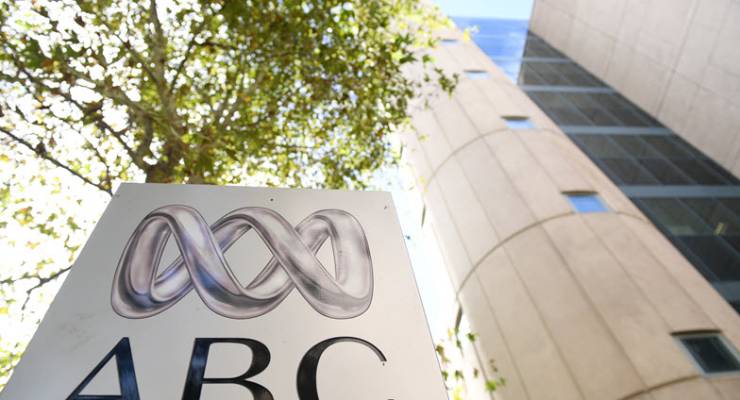
If regional Australians have a choice, they’re picking local commercial TV news over the ABC, according to new research from the Australian Communications and Media Authority (ACMA).
In a study of 11 regional media markets, ACMA found that audiences were happier with their local content in areas where there are local content obligations, and those audiences use their local newspapers and commercial TV bulletins.
According to the research, commercial free-to-air TV was the most trusted source of local news, followed by the local newspaper, and ahead of local ABC radio.
The ABC has recently launched a fresh push for regional content, placing 28 job ads that closed last week, as well as another two senior regional weather editorial roles earlier this month.
The new positions are part of a restructure that was to cut up to 200 jobs from Aunty in order to create a content fund and more resources for coverage of regional Australia. The ACMA report noted the increase, but said it was too early to tell whether this might have an impact on the availability and diversity of local news in regional Australia.
The ACMA research found that regional TV audiences are declining at a slower rate than metropolitan audiences, and that while they turn to social media for breaking news, they still trust traditional media to confirm it.
[Trust in media: the best newspapers get worse, and the worst get better]
The research also found that audiences prefer a full bulletin, rather than short local news updates throughout the day, as some networks do. An unsurprising generational gap was also identified, with young people more likely to head online for local news.
Nine’s head of regional news Mike Dalton reckons his network is taking advantage of regional communities’ preference for local TV news with its new local newsrooms and bulletins across three states. Dalton told Crikey its regional bulletins in Victoria and southern New South Wales were doing well, with some ratings wins against Win in Wollongong and Canberra. The bulletins were not yet in place when the ACMA research was done last year.
“It’s been really well-received,” he said. “Local news is really important for local people. We’ve found there is that demand for local news. It’s the new technology that allows us to go ahead and expand into regional news. It’s something the audience wants.”
Dalton said Nine’s expansion was possible because of technology that makes it cheaper and easier to broadcast from outside metropolitan areas, including being able to send live images over the 4G network or the internet.
[Seven and Ten hit rock bottom]
As the big media companies are pushing for the government’s changes to ownership, Nine’s regional bulletins will increase the options for audiences. In most of the new markets for Nine, which started rolling out earlier this year, there is a competitor broadcasting local news, including Prime7 and Win, which Dalton sees as a positive for viewers:
“Prime does local news in some of the markets and not others, and we have Win and Seven in Queensland. Queensland is very competitive for us, but if Nine does news we do new properly. That’s our reputation as a brand. But more voices is a good thing. It’s a good news story that we’re investing in in the industry.”
For the new newsrooms — four each in Victoria and southern NSW, and seven in Queensland — Nine has taken on another 110 people, and the vast majority of those will be journalists, editors, producers and camera operators. The Queensland bulletins will start with a staged rollout after July 3, starting in Cairns. The bulletins will be read by the metropolitan newsreader for each state, with a mix of the local news, national and international news.








Success at last for Rupert Muckrake and his NewsCrap organisation. A pat of thanks on the head by Rupert for Malcolm Turnip. As for the Aussie sheeples, you can all get fucked; we’re still two years away from the election.
The worrisome question is . . . What is behind the ABC’s apparent passivity towards commercial competition? Are commercial entities, national/regional/local news and comment (both vision and radio) working harder? Whereas, maybe ABC not so; as increasingly it resorts to presenting, incorporating, relayed commercial viewpoints via Murdoch talking heads. In other words are we are seeing, hearing, a trending ‘ABC/lite’, that has lost faith, courage, to exercise independence for fear of government retribution? Whatever is the case, Australia cannot afford the loss of a strong vigilant and visional truly independent national, regional, local broadcaster. It is overtime for some leadership ABC . . . . . .
I’ve been thinking about it after reading this article and I don’t think I’ve ever relied on ABCs tv bulletins for news. Local news from Win and the SBS world news are my go tos if I want dinner time news from the telly.
I listen to ABC Radio for most of my news. The time of ABC TV bulletin is a bit off for me otherwise I would watch that rather than Win/Southern Cross.
I find it hard to believe this concept of ‘local commercial TV’ as it is a contradiction in terms.
The numbers in non urban areas wouldn’t attract enough advertising to pay an agency’s coke bill so what is going on?
Looks like the supamart strategy to me – invade an area, destroy small local competitors then, when they’re gone do whatever you want.
Perhaps I’ve dropped off in Sleepy Hollow and have awoken to a changed world of unicorns & magic ponies where megacorps give a shit.